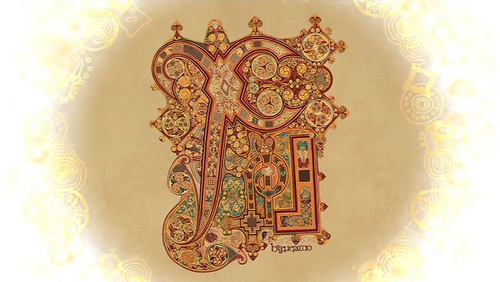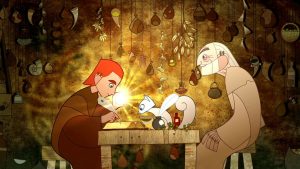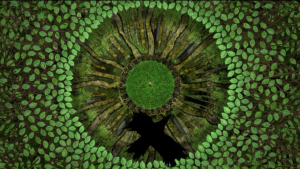I was fascinated to see all the different relationships present in the movie The Secret of Kells between Brendan and the other main characters which challenge the saying “blood is thicker than water.”
The first relationship we were introduced to was that between Brendan and his uncle, Abbot Cellach. It appears that there is some familial love, but there is no warmth in their relationship. Brendan is young and is therefore full of life, creativity, and a yearning to explore what life is like outside of the confines of the walls he has lived in all his life. Cellach however, is older and has more knowledge of the dangers that lie outside the walls and want to protect Brendan from it. Their two very different views of life strains their relationship. The way Cellach is drawn as an incredibly tall, almost larger than life man compared to little Brendan also invokes a sense of how much power and authority he has over his nephew.
We then see the relationship between Brendan and Brother Aidan. Aidan is a smaller man and even though he is much older than Brendan, his creativity, carefree, young-at-heart personality makes him similar to the young boy, and plays a significant role in the amazing relationship that they forged with one another. Aidan also physically looks more like Brendan that Cellach does, which makes it difficult to remember that they are not blood relatives after some time. Art brought them together and sustained their friendship for decades.
Art was also the reason for the genesis of the relationship between Brendan and Aisling, the forest fairy. They met when Brendan went to the forest to get natural painting material for Aidan. Their relationship was full of childhood innocence but quickly grew stronger. In Brendan’s quest to find The Eye of Crom, Aisling essentially sacrifices herself so that Brendan can get The Eye and complete the Book of Kells.
Even though the expression “blood is thicker than water” is more commonly heard, it appears that in the case of this story, the expression “art is thicker than blood” is more appropriate.






